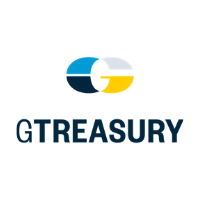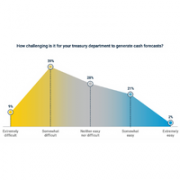$20 Billion in Bank Service Fees: Are You Overpaying?
31-08-2021 | treasuryXL | Gtreasury |
By Heena Ladhani, Ecosystem Manager, GTreasury
Twenty billion dollars. That’s how many corporate treasurers in the U.S. are now forking over to banks in service transaction fees every year. It’s a big number and it’s growing every year. But there’s also vast potential for reducing that amount by optimizing the outlay for-fee services and becoming better-informed for price negotiations.
A recent survey from Treasury Strategies determined that 70 percent of corporate treasurers are reviewing their bank service fees on a monthly basis. However, the same survey determined that a fraction – just 21 percent of treasurers – will actually benchmark those service fees as part of their bank analysis and management. Among those treasurers who do use benchmarks, many only do so on a line-item basis, rather than at the product category level. A majority also don’t have processes to recognize the impact of volume on benchmark prices. In short, there is room – a lot of room – for opportunities to trim costs.
Accurate bank fee analysis backed by correctly applied benchmarking enables treasurers to preserve strong relationships with bank creditors as well. Too often, simplistic benchmark techniques give treasurers only a surface-level analysis of whether fees are in line with market averages. As a result, treasurers may falsely challenge their banks over small sums, while missing out on more appropriate and fruitful interventions – a ‘can’t-see-the-forest-for-the-trees’ scenario. Incomplete analysis comes with its own costs, absorbing misapplied resources and eroding creditors’ goodwill over insignificant or erroneous concerns.
Let’s look at two examples of how benchmarking, done right, can ensure treasurers’ accurate analysis and lead to optimized bank transaction costs:
Example 1: Benchmark beyond what you know
Wire transfer fees are an area in which effective benchmarking is especially ripe for opportunity. For example, suppose a treasurer’s initial internal benchmarking finds that the four banks the company uses offer rates spanning from $14 to $20. This self-benchmarking reveals the potential to move all wire transfer fees to the $14 rate. However, expanding benchmark horizons to the market at large makes clear that all the banks are charging fees well above the median.
There is no shortage of potential reasons for this, which should be investigated. The company could potentially reduce fees by using a bank portal, streamlining Fedwire, SWIFT, or CHIPS costs, opting for digitized communications, and beyond. Importantly, though, a small cost on each wire can quickly add up to significant savings. By benchmarking these fees at a more expansive scope, those savings can be found, pursued, and realized.
Example 2: True treasury management services costs are multi-dimensional
Take a hypothetical corporate treasurer examining lockbox item processing fees at two different banks. Bank X charges $0.30 per item; Bank Y charges $0.50. The treasurer’s organization directs 500 items to Bank X each month, and 5000 to Bank Y. On the surface, the treasurer’s analysis is simple: Bank Y is overly expensive and should be challenged.
A deeper and more holistic analysis, however, clarifies a more accurate picture. Factoring in bundled remittance processing services – such as monthly lockbox maintenance, daily deposit ticket charges, image and hardcopy fees, and courier fees – rewrites the story. Now it’s clear that Bank X provides a per item rate of $4.00, but Bank Y is just $3.00. The more simplistic cost benchmark analysis missed this crucial information.
When it comes to bank pricing, treasurers also have a variety of options for optimization. For example, treasury could consolidate the lockbox items to Bank Y’s lower cost. It could then restructure processing at that bank to the market’s median price. Alternatively, it could request a bid from Bank Yon on the total volume and explore that offer.
Apply robust benchmark analysis across the board
The same process for optimizing bank offers and options based on complete and accurate benchmark analysis applies to all bank services used by corporate treasury teams. All transaction processing and information services should be put to careful scrutiny to see what savings may emerge. In this way, implementing the right treasury management strategy and processes to make robust benchmarking an integrated component of regular bank fee analysis is an investment that pays equally robust dividends.
Author: Heena Ladhani is the Ecosystem Manager at GTreasury, a treasury and risk management system. She is a FinTech professional with more than seven years of experience working with global clients to design solutions and improve processes utilizing treasury systems. She resides near Chicago.











